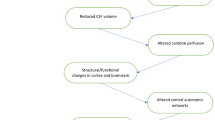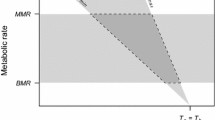Summary
Experiments in isolated cat hearts showed, that with increased Ca++-concentration of the perfusion-medium (0,56 g CaCl2/1000 ml) the onset of mechanical systole of left ventricle occurred earlier (21,9±3,3 msec after the onset ofQRS-complex in the ECG) than in experiments with a normal Ca++-concentration (0,28 g CaCl2/1000 ml). The onset of mechanical systole of the right ventricle was not effected.
Hypothermie (25–27°C) resulted in an earlier onset of the left chamber's mechanical systole (35,9±5,1 msec after the onset of theQRS-complex in the ECG) than temperature of 35–37°C. This effect was pronounced especially in the right ventricle (88,0±13,5 msec after the beginning of theQRS-complex in the ECG).
The different reactions under these experimental conditions resulted in a tendency of increasing asynchronism in the onset of the mechanical systole of both heart chambers.
In hypothermia the influence of increased aortic or pulmonary resistance on the onset of the mechanical systole of both ventricles was the same (shortening) as in earlier experiments with normal temperature.
In contrast to this, an increased Ca++-concentration of perfusion-medium modified this effect on the onset of the left mechanical systole, i. e., under these experimental conditions the shortening of this parameter by increased aortic resistance was much more pronounced.
These results suggest, that the onset of the ventricular systole of both chambers is affected by hemodynamic conditions, which influence the dynamics and the course of the ventricular contraction. Besides, increased Ca++-concentration or hypothermia is able to affect the timing of the onset of ventricular systole. It is concluded, that these reactions are the results of altered contractile properties.
Similar content being viewed by others
Literatur
Angelakos, E. T., E. G. Laforet andA. H. Hegnauer, Ventricular excitability and refractoriness in the hypothermic dog. Amer. J. Physiol.189, 591 (1957).
Antoni, H., G. Engstfeld undA. Fleckenstein, Inotrope Effekte von ATP und Adrenalin am hypodynamen Froschmyokard nach elektromechanischer Entkoppelung durch Ca++-Entzug. Pflügers Arch. Physiol.272, 91 (1960).
Badeer, H., Effect of hypothermia on oxygen consumption and energy utilization of heart. Circ. Res.4, 523 (1956).
Berne, R. M., Myocardial function in severe hypothermia. Circ. Res.2, 90 (1954).
Blasius, W., C. Albers, G. Bach, W. Brendel, R. Thauer undW. Usinger, Große und zeitliche Verteilung der Spannungsproduktion des Herzens während Hypothermie beim Hund. In: Verh. Dtsch. Ges. Kreislaufforschg.23, 135 (Darmstadt 1957).
Brendel, W., Kreislauf in Hypothermie. In: Verh. Dtsch. Ges. Kreislaufforschg.23, 33 (1957).
Dudeck, J., Gemischte Modelle der Varianzanalyse mit partiell hierarchischer Anordnung (In Vorbereitung).
Feinberg, H., E. Boyd, andL. N. Katz, Calcium effect on performance of the heart. Amer. J. Physiol.202, 643 (1962).
Fleckenstein, A., Physiologie und Pathophysiologie des Myokard-Stoffwechsels im Zusammenspiel mit den bioelektrischen und mechanischen Fundamentalprozessen. In: Das Herz des Menschen (Stuttgart 1963).
Gemmill, C. L., K. M. Browning, andW. P. Kanto, Sodium pentobarbital on temperature and heart rate of rats subjected to cold. Proc. soc. exper. Biol. Med.118, 290 (1965).
Goodyer, A. V. N., Effects of hypothermia and pyrexia on left ventricular function in the intact animal. Amer. J. Cardiol.15, 206 (1965).
Govier, W. C. andW. C. Holland, The relationship between atrial contractions and the effect of Ouabain on contractile strength and calcium exchange in rabbit atria. J. Pharmacol. exper. Ther.148, 284 (1965).
Gribbe, P., L. Hirvonen andT. Peltonen, Observations of the hypothermic cat heart. Cardiologia44, 28 (1964).
Groedel, F. M., Physiological and pathological asynchronism of the functions of the heart chambers. Exper. Med. Surg.1, 352 (1944).
hengst, W. undK. Wezler, Beitrag zur Dynamik des isolierten, spontanschlagenden Warmblüterherzens. Akademie der Naturwissenschaften und der Literatur, Abhandlungen der Math.-Nat. Klasse, Heft 1–6, 197 (1958).
Katz, L. N., The asynchronism of right and left ventricular contractions and the independant variations in their duration. Amer. J. Physiol.72, 655 (1925).
Kohlhardt, M., D. Voth, K. Wirth undJ. Dudeck, Zur Frage des asynchronen mechanischen Systolenbeginns beider Ventrikel des isolierten Herzens. Z. exper. Med.144, 120 (1967).
Lombardo, T. A., L. R. Radigan andA. G. Morrow, Myocardial failure in experimental hypothermia. Circ. Res.5, 22 (1957).
Marshall, J. M., Effects of low temperatures on transmembrane potentials of single fibers of the rabbit atrium. Circ. Res.5, 664 (1957).
Mavor, G. E., R. A. Harder, R. K. McEvoy, A. B. McCoord, andE. B. Mahoney, Potassium and the hypothermic heart. Amer. J. Physiol.185, 515 (1956).
Midrio, M. andL. Sperti, Mechanism of calcium-induced positive chronotropic effect in isolated mammalian atria. Nature198, 792 (1963).
Moulopoulos, S. D., A. Sarcas, S. Stamatelopoulos, andE. Arealis, Left ventricular performance during by-pass or distension of the right ventricle. Circ. Res.17, 484 (1965).
Nayler, W. G. andJ. E. Wright, Effect of epinephrine on the mechanical and phosphorylase activity of normo- and hypothermic hearts. Circ. Res.13, 199 (1963).
Niedergerke, R., Calcium and the activation of contraction. Experientia (Basel)15, 128 (1959).
Niedergerke, R. andR. K. Orkand, The dual effect of calcium on the action potential of frogs heart. J. Physiol.184, 291 (1966).
O'Brien, L. J., Negative diastolic pressure in the isolated hypothermic dog heart. Circ. Res.8, 956 (1960).
Paradise, R. R., Influence of potassium and calcium on behaviour on isolated rat atria. Proc. soc. exper. Biol. Med.112, 483 (1963).
Puff, A., Funktionelle Anatomie des Herzklappenapparates. In: Verh. Dtsch. Ges. Kreislaufforschg.31, 1 (Darmstadt 1965).
Reissmann, K. R. andS. Kapoor, Dynamics of hypothermic heart muscle (heart-lung preparation). Amer. J. Physiol.184, 162 (1956).
Reiter, M., undJ. Noe, Die Bedeutung von Calcium, Magnesium, Kalium und Natrium für die rhythmische Erregungsbildung im Sinusknoten des Warmblütlerherzens. Pflügers Arch. Physiol.269, 366 (1959).
Rushmer, R. F., Anatomy and physiology of ventricular function. Physiol. Rev.36, 400 (1956).
Russ, C. andJ. C. Lee, Effect of hypothermia on myocardial metabolism. Amer. J. Physiol.208, 1253 (1965).
Samet, P., W. H. Bernstein, andR. S. Litwak, Ventricular asynchronism in the dog. J. Appl. Physiol.17, 479 (1962).
Seifen, E., W. Flacke, andM. H. Alper, Effects of calcium on isolated mammalians heart. Amer. J. Physiol.207, 716 (1964).
Surawicz, B., Effect of Ca on duration ofQT-intervall and ventricular systole in dog. Amer. J. Physiol.205, 785 (1963).
Taquini, A., I. Fermoso, andR. Aramendia, Behaviour of the right ventricle following acute constriction of the pulmonary artery. Circ. Res.17, 484 (1965).
Torres, J. C. andE. T. Angelakos, Effect of hypothermia on excitation and propagation in the isolated atrium. Amer. J. Physiol.207, 199 (1964).
Torres, J. C., Ventricular conduction and refractoriness during hypothermia. Circ. Res.18, 323 (1966).
Trautwein, W. undJ. Dudel, Aktionspotential und Mechanogramm des Katzenpapillarmuskels als Funktion der Temperatur. Pflügers Arch. Physiol.260, 104 (1954).
Wiggers, C. J., The interpretation of the intraventricular pressure curve on the basis of rapidly summated fractionate contractions. Amer. J. Physiol.80, 1 (1927).
Author information
Authors and Affiliations
Additional information
Mit 7 Abbildungen und 2 Tabellen
Rights and permissions
About this article
Cite this article
Kohlhardt, M., Voth, D., Wirth, K. et al. Über den Einfluß von Calcium++ und Hypothermie auf den mechanischen Systolenbeginn beider Ventrikel des isolierten Katzenherzens. Archiv für Kreislaufforschung 54, 43–58 (1967). https://doi.org/10.1007/BF02120021
Received:
Issue Date:
DOI: https://doi.org/10.1007/BF02120021




